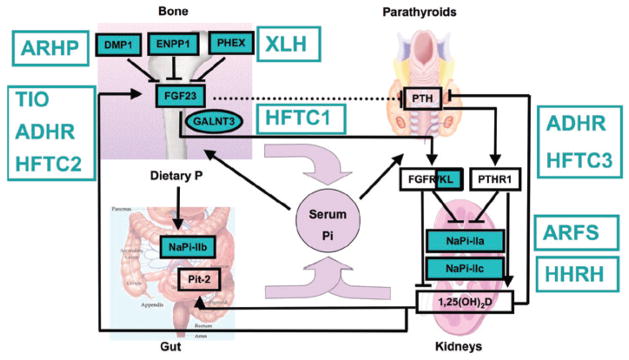Figure 2.
Disorders of phosphate homeostasis. FGF23 expression in bone is up-regulated by an increase in dietary phosphate intake and by 1,25(OH)2D and down-regulated, through yet unknown mechanisms, by PHEX, DMP1, ENPP1 and probably several additional proteins. FGF23 acts through one or more FGF receptors, with Klotho as coreceptor, to inhibit renal phosphate re-absorption and to decrease circulating 1,25(OH)2D levels and possibly to inhibit PTH secretion by the parathyroid glands (dashed line). The net effect of these PTH-dependent actions is a decrease in serum phosphate levels, yet an increase in serum 1,25(OH)2D levels. 1-alpha hydroxylase activity is also up-regulated by low serum phosphate levels and down-regulated by increased serum calcium and phosphate levels and by increased FGF23 levels. 1,25(OH)2D acts through VDR/RXR heterodimers to enhance the intestinal absorption of phosphate and to stimulate FGF23 synthesis and secretion by osteocytes; it furthermore inhibits PTH synthesis and secretion by the parathyroid glands. The net 1,25(OH)2D effect is an increase in serum phosphate levels. The disorders affecting phosphate homeostasis are indicated in green. Please see the text for a detailed description.

